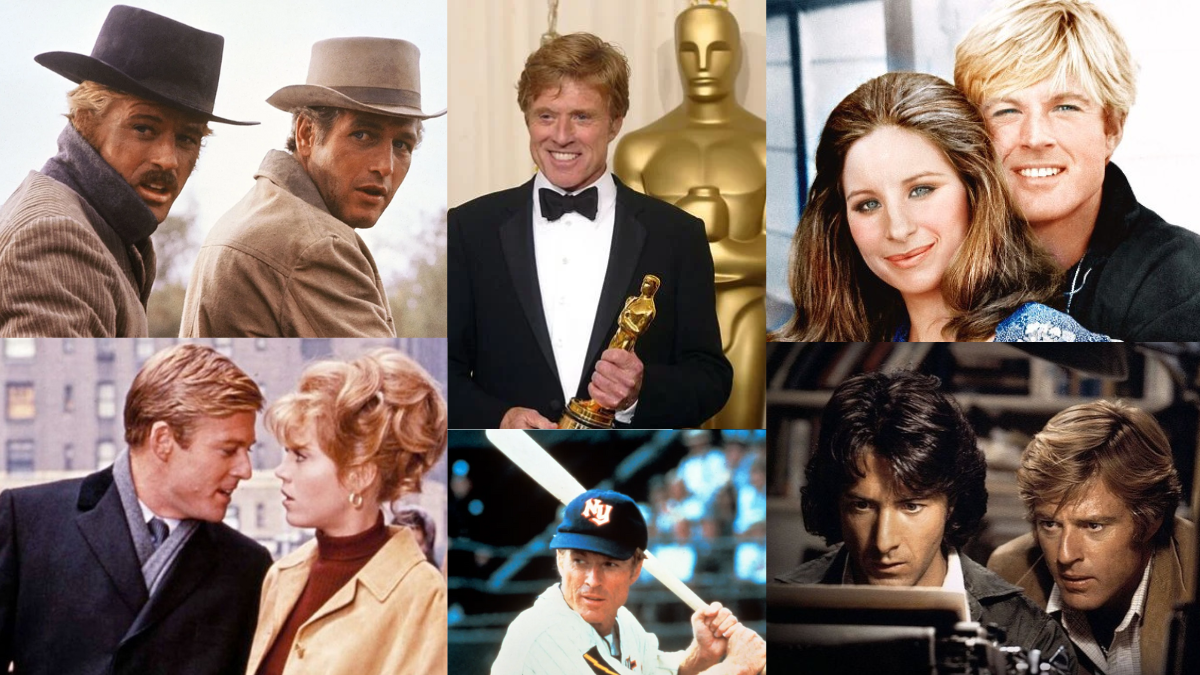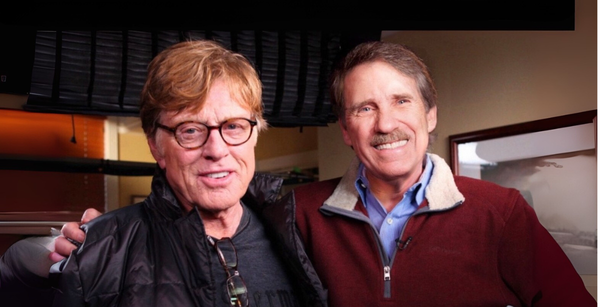He was always late. That’s one thing that pissed me off about Robert Redford. I can’t think of too much else. OK, he should never have made “The Horse Whisperer,” but we’re talking about personal quirks. Since the day I met him somewhere near the end of the 20th century, Redford could not show up on time. So his publicist, the late, great Lois Smith, arranged for my interview to take place at his Manhattan apartment on Central Park West. For one thing, he was home already. For another, she handed me some office mail he was eager to see.
Redford knew from adoration and fought it at every turn. Who was the man behind the talent and impossible good looks?
“I’m looking for Robert Redford,” I announced to the doorman with a misplaced confidence only my youth and inexperience could muster, outside of a stalker, of course. He smiled without cruelty, checked a list, and to his amazement saw my name on it. “Twelfth floor,” he told me. “What number on the twelfth floor,” I asked, which brought out another smile. “Mr. Redford is the twelfth floor,” he said, “just take the elevator over there.”
Mr. Redford was indeed the twelfth floor, the whole thing. When I rang the bell, he appeared himself, no hovering assistants befitting the star of “Butch Cassidy and the Sundance Kid,” “The Sting,” “The Way We Were,” “All the President’s Men” and other assorted classics. “Hi,” I said with fake confidence, “I’m Peter Travers, boy reporter.” Instead of slamming the door, he waved me in, grinned and countered with, “I’m Robert Redford, aging star.”
Four hours later, after sharing stories of our misadventures—he asked a lot of questions about what I loved about movies and told me what he hated about selling them—I left the twelfth floor having had a great conversation and nothing usable for an interview.

That would come later, over time, when you get to know someone well enough to cut the bull or at least laugh about it when the clichés sneak in. I once called him, “the star who made integrity sexy.” He hated that.
The facts of his death were covered on a global scale: Redford died on Tuesday at the age of 89 in his home near the mountains of his resort at Sundance, a nod to his famous Sundance Kid but also to the Sundance Film Festival he built right there in Utah’s Park City to help young filmmakers get their work seen. Redford is survived by his wife, Sibylle Szaggars Redford, his daughters Shauna Schlosser Redford and Amy Redford, and his seven grandchildren. The Redfords spent many of his last years in Santa Fe, New Mexico, where Sibylle runs an art gallery. But Utah, that was home.
“Art” is the word that cuts through the recitation of statistics. It’s the first thing you need to know about Redford, an L.A. kid who contracted a slight case of polio as a child, lost his mom as a teenager, hung out with a tough crowd but hungered to paint, which gave him a lifelong eye for detail that would feed into his work as actor and director.
Take the scene in the Redford-directed 1994 Oscar-nominated “Quiz Show,” when Columbia professor Charles Van Doren, played by Ralph Fiennes, immodestly revels in his fame as a contestant on a rigged TV quiz show. Redford shows the sneaking corruption in a telling moment when the prof stalls to tie his shoe so his emergence on campus will synchronize with a class bell and a wave of adoring students.
Redford knew from adoration and fought it at every turn. Who was the man behind the talent and impossible good looks? In “The Way We Were,” Redford played a sellout writer who wrote of himself: “In a way he was like the country he lived in, everything came too easily to him.” Many people think those words could also fit Redford. They’d be wrong.
Redford knows that Paul Newman, who’d become a great friend later, had to fight for him to play Sundance to his Butch. The studio wanted a star. Newman wanted Redford. Newman won. Redford has always remained grateful. Newman also taught him that the trick to being famous was doing something useful with it.
Sundance is one example. The festival will move next year from Utah to Boulder, Colorado, something about more space. But the real Sundance, the one created by Redford back in the 1980s, that’s the one that lives in our memories and hearts.
On one of my annual visits to the festival, Redford told me he was getting tired of appearing at screenings and posing with the filmmakers like a prop. I told him that he was Sundance and that the young filmmakers and their families needed to take a photo with him (selfies weren’t a thing back then) to prove the experience was real.
And Redford was real, flaws and all. I’ve seen him be angry (his lips get thin, his voice quieter—it’s not pretty). That doesn’t mean he didn’t like a teasing challenge, like when I asked him how it feels when one of his movies flops. “Like what,” he asked. So I answered: “Like “Havana,” like “The Legend of Bagger Vance,” like “The Great Gatsby,” like …” “Are you enjoying this?” he asked. Yes, I truly was.
He didn’t understand when professional critics cross the line into the personal, like Pauline Kael in her review of “The Sting,” saying that Redford’s hair “has turned almost alarmingly blond—he’s gone past platinum, he must be into plutonium; his hair is coordinated with his teeth.”
“Barefoot in the Park,” a 1960s romcom cast him as a newlywed whose firebrand bride (a never more vivacious Jane Fonda) thinks he’s a stiff who can’t cut loose. Like many of Redford’s best female costars, Fonda knew intuitively that Redford needed to be mussed up. So did Barbra Streisand in “The Way We Were.” That fire is lacking with, say, Meryl Streep in “Out of Africa” and Mia Farrow in “The Great Gatsby.” And damn, it shows.
Redford could be defensive when pushed too hard on a film of which he’s justifiably proud, be it “Jeremiah Johnson,” “Downhill Racer” or “Quiz Show,” (for me, his pinnacle as a director, apologies to “Ordinary People”). Yet he can laugh off insults. At one lunch, we overhear two ladies in the booth behind us—talking in whispers you can hear across canyons. One says, “oh, he’s getting old,” the other adding, “and so short.” Redford laughs (it’s a great laugh), topped by a sheepish grin: “I’m such a disappointment. I’m not a facelift person. I am what I am.”
Many Redford fans were disappointed when the actor turned down the role of the alcoholic lawyer in “The Verdict.” His pal Paul Newman took on the project and triumphantly nailed every note of darkness in the script by David Mamet. Redford wanted a redemption arc for this no-hope character. But hope was something Redford didn’t compromise on. Hope was something Redford needed in art and life.
Redford could be formal in interviews, especially on camera. We could be laughing minutes before airtime and then he’d turn dead serious about the issues that fired him up. “More people should be serious,” he told me once with a dark stare, “it’s serious business living in this world.”
Any assault on the environment infuriated him way more than any perceived career missteps. It seems absurd that Redford has received only one Oscar nomination as an actor, for “The Sting.” He won as a director for “Ordinary People,” a prize that he said pleased him more.
Redford did some of his best acting near the end of his career. His role as one man sailing against a storm at sea in “All Is Lost” won him the Best Actor prize from the hard-to-please New York Film Critics Circle. Oscar turned its back, as it did again in his final film, 2018’s “The Old Man and the Gun,” the true story of the so-called “gentleman bank robber” who’d escaped from prison 18 times by the time he was 70. Redford, then 82, announced his intent to retire from acting after completion of the film. His brief appearance in "Avengers: Endgame" (2019) was filmed before he made “The Old Man & the Gun,” which stands as a fine and fitting acting farewell, directed by David Lowery, a Sundance alum himself with “Ain’t Them Bodies Saints.” Talk about coming full circle.
The last time I saw Bob was at an awards dinner in NYC—he was late as usual. He shrugged off all the hubbub as if saying “what are you going to do.” So I never had the chance to tell him what his fellowship meant to me. OK, I probably wouldn’t have anyway. Bob was generous with compliments but squirmed when praise was directed his way about his advocacy for the environment and the young filmmakers whose talent he showcased at Sundance. So let me use this space to say with his preferred clarity and simplicity: “Job well done, Redford, job well done.”

